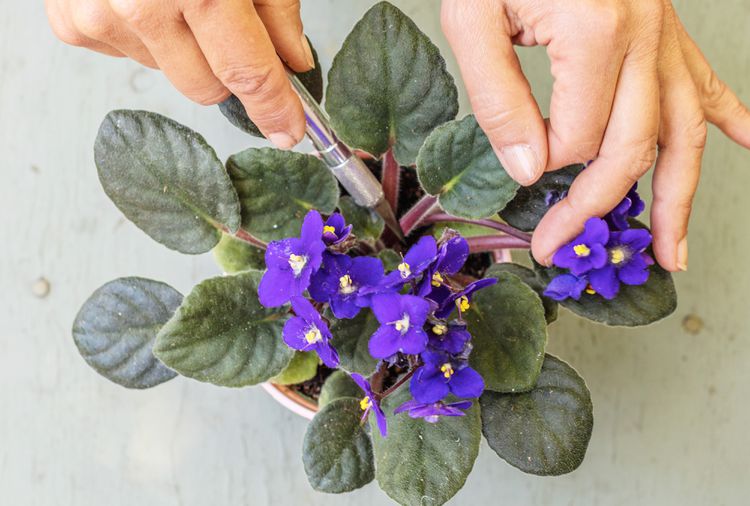When you know how to propagate African violets (Saintpaulia ionantha), it's easy to expand your collection of these colorful houseplants whenever you like. All you need is a single leaf to grow whole new plants. And before long, your propagated African violets will begin producing flowers of their own. So if you have a favorite plant or a friend with one who will share a leaf with you, here's how to propagate African violets from a leaf cutting.
- Meagan McManus, executive board member, Northwest Horticultural Society
- Beth Syphers, flower farmer, Crowley House Flower Farm
When to Propagate African Violets
Whenever you want to make more plants from your African violet is a good time to start propagating, says Meagan McManus of the Northwest Horticultural Society. “Giving to friends is why I propagate some of my favorite plants. It’s joyful to give them away to people who will appreciate them," she adds. "Then there’s a whole subset of people who are hardcore African violet people who belong to societies and want [to propagate] a certain color or hybrid.”
Whatever your reasons for propagating African violets, you can take cuttings any time of year. However, the best time is during the spring and summer. The warmer temperatures and better lighting during these months are ideal for promoting the growth of cuttings.
How to Take African Violet Cuttings
When taking the cuttings, sterilize a sharp craft knife or similar sharp cutting instrument with rubbing alcohol or bleach, and water the plant before taking a cutting. Choose a leaf that is not very mature but also not super young—somewhere in the middle is best. Cut 1 or 2 inches of the leaf's stem when taking cuttings of your violet, making the cut at a 45-degree angle. Place the African violet cutting directly into water or potting soil after you cut it off the main plant.
Rooting Cuttings in Water
Beth Syphers of Crowley House Flower Farm suggests using a small shot glass as a vessel for the cuttings. After you cut the stem, place it in the shot glass filled with water and check on it every day. It takes about three weeks for it to root after it is placed in water. Set the shot glass in a warm, sunny, brightly lit area, but not in direct sunlight. It will do best in filtered light, such as behind a curtain near the windowsill. After roots form, transfer the cutting into a well-draining potting mix with added perlite or vermiculite.
Rooting Cuttings in Soil
You can also place cuttings directly into small pots filled with amended potting soil. After you cut a stem, dip the cut end in a rooting hormone, making sure to tap off any excess powder. Place the stem and ¼ inch of the leaf into moist potting soil. Use a clear plastic ziptop bag to create a mini-greenhouse over your cutting, making sure the plastic doesn't touch the cutting. This will help keep humidity high enough to encourage rooting.
With either method, roots can take several weeks to form. “It will probably take you about three to four weeks until you start to see some sort of root growth and then even longer for the little leaflets to come out. So you have to be really patient,” says McManus.
How to Care for African Violet Cuttings
Although African violets tolerate moist soil conditions, you don’t want to drown the plant in water. When you plant the rooted cuttings in soil, provide consistent moisture. Check the moisture level by sticking your finger in the soil. If it is dry, water the plant well. If it is moist all the way through, you don’t need to water it yet.
“I just like to make sure that when I stick my finger in, it’s not oversaturated or too dry,” says Syphers. “I think [keeping it] too dry is when you’re going to fail. You want to keep that even moisture level. I suggest using a mist bottle to moisten the soil if you’re monitoring it every day or every couple of days. You can water pretty well with a mist bottle. It helps control the process more than dumping in a glass of water.”
Place a newly rooted cutting near the mother plant so it gets the same amount of light as it received before it was cut.
McManus advises placing the new plant in an east-facing window because the southern and western windows deliver too much sun that might stress or burn the plant.




















